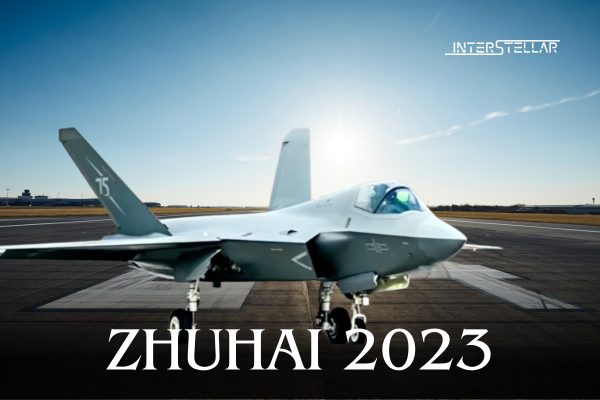China’s New J-35A Stealth Fighter to Debut at Zhuhai Air Show
China is set to reveal its latest stealth fighter, the J-35A, at the upcoming China International Aviation & Aerospace Exhibition in Zhuhai. This biennial event, starting Tuesday, November 14, will showcase China’s rapidly expanding aerospace industry and its ambition to become a global player in both military and civil aviation.
Unveiling the J-35A: A Strategic Military Priority
The J-35A, developed by Shenyang Aircraft Corporation, will be displayed publicly for the first time. Described by the People’s Liberation Army Air Force (PLAAF) as a “medium-sized stealth multi-purpose fighter,” the J-35A is seen as a cornerstone of China’s carrier-based aviation capabilities. Building on the earlier J-31 model introduced in 2014, the J-35A will reportedly operate from conventional airstrips, while its development hints at future carrier-based deployments.
China’s ongoing efforts to enhance its indigenous aerospace technology underscore its strategy to achieve military self-reliance and counterbalance US influence in the region, particularly around Taiwan and the South China Sea. Notably, Russia’s SU-57 fighter jet will also make its international debut at the event, highlighting the growing military collaboration between China and Russia.
COMAC and China Bid for Commercial Aerospace Market Share
In addition to military displays, the air show will spotlight China’s burgeoning commercial aviation sector, led by state-owned manufacturer COMAC (Commercial Aircraft Corporation of China). COMAC’s presence signals China’s ambition to compete with aviation giants Airbus and Boeing by producing domestically manufactured jets. The company’s ARJ21 regional jet, recently spotted with the new C909 designation, may debut under its updated branding. This rebranding aligns with China’s broader strategic vision to compete on the global stage as a viable alternative to Western aircraft.
COMAC still faces substantial obstacles in achieving international competitiveness, particularly the need for certifications from the European Union and the US for its flagship C919 airliner. Nevertheless, COMAC has the advantage of a vast domestic market. With China projected to need over 8,800 new aircraft by 2043, according to Boeing, COMAC’s domestic focus could position it as a strong player in China’s aviation landscape.
Zhuhai Air Show: A Platform for Domestic and International Collaboration
As the first Zhuhai Air Show since China lifted COVID-19 travel restrictions, the event expects a significant international presence. Airbus and Embraer are set to participate, while Boeing will not have an official presence this year, following its CEO’s decision to limit travel after a recent workers’ strike. This absence comes as China aims to reduce dependence on foreign suppliers in favour of domestic innovation and production, a move driven by recent geopolitical tensions and trade uncertainties.
China’s strategic investments in aerospace, from advanced fighter jets to commercial airliners, reflect its vision to reduce reliance on imports and achieve greater self-sufficiency. The Zhuhai Air Show will offer a close look at how China is advancing these ambitions in both military and civilian aviation, with ripple effects expected across global aerospace industries.





